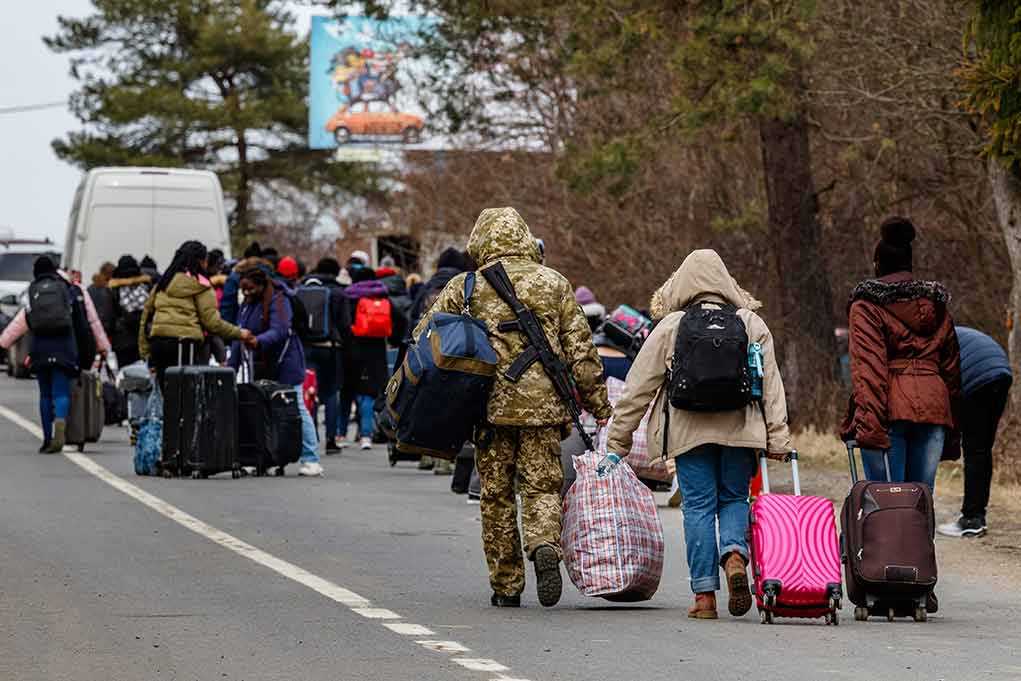
Berlin’s massive overnight evacuation exposes how unresolved threats from World War II still upend daily life, as nearly 20,000 residents were forced from their homes due to undiscovered bombs lurking beneath the city.
Story Snapshot
- Authorities evacuated over 10,000 residents in Berlin overnight after two unexploded WWII bombs were found during construction checks.
- Emergency services established a 500-meter exclusion zone and set up shelters as transport was halted throughout the affected area.
- After assessment, one bomb was deemed safe and residents returned home, while another in Spandau required a second large evacuation.
- The event underscores the ongoing risks and disruptions caused by wartime ordnance in European cities, decades after the conflict ended.
Discovery of WWII Bombs Triggers Mass Evacuation
On Thursday evening, Berlin authorities discovered two unexploded World War II bombs during routine construction checks in the Fischerinsel district, a densely populated area at the city’s heart. Emergency services immediately established a 500-meter exclusion zone, ordering over 10,000 residents to evacuate overnight. Emergency shelters were set up, and public transportation—including ship and subway lines—was suspended to ensure civilian safety and streamline the evacuation process. The swift response reflected the city’s established protocols for handling such dangerous discoveries.
By Friday morning, bomb disposal experts assessed the primary device, which had been located under four meters of water in the River Spree, and determined it did not require defusing. Residents were permitted to return home, minimizing the duration of disruption. Separate from the Fischerinsel incident, a second unexploded bomb was found in Spandau, necessitating the evacuation of an additional 12,000 people. Local officials coordinated a second round of emergency protocols to manage the expanded risk and ensure public safety throughout both neighborhoods.
Historical Legacy and Modern Urban Challenges
Berlin’s persistent encounters with unexploded wartime ordnance stem from the city’s heavy bombardment during World War II, which left thousands of bombs buried and forgotten. Construction projects in Berlin, and in other European cities with similar histories, commonly require pre-work checks for such dangers. These measures are not merely precautionary; they are necessary to prevent catastrophic accidents and have, over the years, prompted multiple mass evacuations. The Fischerinsel and Spandau incidents highlight the scale and frequency of these challenges, reminding citizens and officials alike of the enduring legacy of conflict in urban planning and daily life.
Authorities and emergency services have developed rigorous protocols for responding to these threats, including clear communication with the public, rapid deployment of resources, and the provision of temporary shelter. These actions are crucial to minimizing risk and maintaining public trust. However, the psychological impact on residents—forced from their homes with little notice—underscores the need for continued investment in detection technology and emergency preparedness. Experts emphasize that as cities grow and redevelopment intensifies, the intersection of historical legacy and modern infrastructure presents ongoing risks that cannot be ignored.
Impacts on Residents, Emergency Services, and City Life
The evacuations caused widespread disruption for residents, local businesses, and commuters. Emergency shelters quickly filled, putting pressure on social services and highlighting the logistical challenges of managing such large-scale operations. The costs—economic and emotional—are significant: from lost productivity to heightened anxiety among families suddenly displaced. For city officials and emergency responders, the event was a test of Berlin’s capacity to protect its citizens while maintaining order during an unexpected crisis. The efficient resolution, with residents returning home within hours of the all-clear, demonstrates both the effectiveness of established protocols and the resilience of Berlin’s population.
Nevertheless, these events reveal the limitations of current approaches. While the immediate danger was addressed, the recurrence of such incidents signals a need for ongoing vigilance, public education, and technological improvement in bomb detection. The broader implications extend beyond Berlin, serving as a cautionary tale for cities across Europe that share a similar wartime legacy and face the same latent threats beneath their streets.
Expert Perspectives and Lessons for the Future
Urban safety specialists and historians agree that Berlin’s WWII legacy will continue to shape city life and policy for years to come. Experts advocate for increased investment in detection technologies, enhanced emergency planning, and robust public communication strategies to better manage future incidents. They also note the psychological toll on communities repeatedly subjected to these disruptions, emphasizing the importance of mental health support and transparent information sharing. The coordinated response in Berlin serves as a model of efficiency, but as redevelopment accelerates across Europe, the lessons learned here must inform broader strategies to safeguard urban populations from the hidden dangers of the past.
Sources:
Berlin Evacuates Over 10,000 Residents Overnight After Discovery of Unexploded WWII Bombs
List of mass evacuations (Wikipedia)











